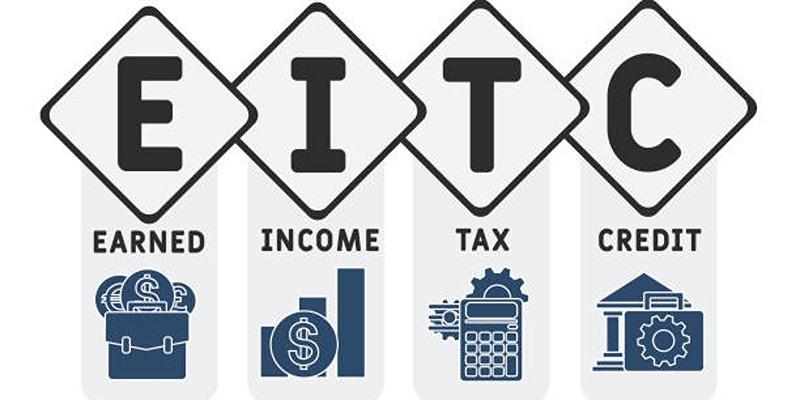Your Guide to Understanding the Earned Income Tax Credit (EITC)
The Earned Income Tax Credit (EITC) is a tax benefit designed to help low- to moderate-income workers and families. It aims to reduce the amount of income tax owed and can even result in a refund. Understanding how the EITC works can be helpful for those who qualify, as it provides financial relief. This guide will explain what the EITC is, who is eligible, and how to claim the credit.
What Is the Earned Income Tax Credit?

The Earned Income tax credit (EITC) is a reimbursable tax service designed to promote income and support workers and families by encouraging employment. As a return credit, it can not only reduce the tax bill to zero, but also provides a refund if the credit crosses the amount you need to.
The value of the credit depends on factors such as income, submission status and the number of qualified children. Families with more qualified children get a large credit, which makes EIC beneficial to those with specific addicts.
Advantages of the EITC:
The Earned Income Tax Credit (EITC) offers significant benefits for eligible taxpayers:
- Boosted Income: This credit provides meaningful financial relief, helping you manage essential expenses with greater ease.
- Refundable Credit: Even if you owe no taxes, you may still receive a refund if the credit exceeds your tax liability.
- Work Incentive: By rewarding employment, the EITC supports financial independence and encourages workforce participation.
Who is Eligible for the EITC?
Qualifying for the Earned Income Tax Credit (EITC) depends on meeting specific criteria related to your income, filing status, and dependents. Here’s an overview of the key eligibility requirements:
1. Earned Income
You must have earned income from employment, self-employment, or certain disability payments. Passive income, such as dividends or interest, does not meet this requirement.
2. Income Limits
Your adjusted gross income (AGI) must fall below established thresholds, which vary based on your filing status and the number of qualifying children you have. These income limits are regularly updated to account for changes in the cost of living.
3. Filing Status
Eligible filing statuses include single, head of household, married filing jointly, or qualifying widow(er). Unfortunately, married individuals filing separately do not qualify for the EITC.
4. Social Security Number
You, your spouse (if filing jointly), and any qualifying children must each have a valid Social Security number to claim the EITC.
5. Citizenship or Residency Requirements
You must be a U.S. citizen or a resident alien for the full tax year to qualify for the EITC.
6. Qualifying Children
If you are claiming the EITC with children, they must meet specific criteria, including age, relationship, residency, and dependency tests.
How to Calculate Your EITC?
Your Earned Income Tax Credit (EITC) is determined by three main factors: your earned income, adjusted gross income (AGI), and the number of qualifying children. To help you estimate your credit, the IRS offers EITC tables and an easy-to-use online EITC Assistant tool.
Key Factors That Influence Your EITC:
- Income Level: The credit increases as your income grows, up to a certain limit. Once your income surpasses the threshold, the credit gradually decreases.
- Number of Qualifying Children: The more qualifying children you have, the larger your potential credit.
- Filing Status: Married couples filing jointly often benefit from higher income limits and may qualify for a larger credit.
How to Claim the EITC?
Claiming the Earned Income Tax Credit (EITC) is a simple process, as long as you meet the eligibility criteria. Just follow these steps:
1. Gather Your Documents
Start by collecting all necessary documents, including:
- Proof of earned income, such as W-2 or 1099 forms, or self-employment records.
- Social Security numbers for yourself, your spouse, and any qualifying children.
- Details about your filing status and dependents.
2. Complete the Required Forms
To claim the Earned Income Tax Credit (EITC), you must file a federal tax return—even if you don’t owe taxes or aren’t otherwise required to file. Use the appropriate tax form for your situation, such as Form 1040. If you’re claiming the EITC for qualifying children, make sure to include Schedule EIC, which outlines details about the children you’re claiming.
3. Double-Check for Accuracy
Mistakes or missing information on your tax return can delay your refund or even result in your EITC claim being denied. Carefully review every section of your return, including personal information, income details, and any additional forms like Schedule EIC. To minimize errors, consider using tax preparation software or consulting a tax professional. Taking the time to ensure your return is accurate and complete can save you from unnecessary setbacks.
4. Submit Your Tax Return
When it’s time to file your tax return, you can choose between electronic filing and mailing. E-filing is faster, more convenient, and reduces the risk of errors, with most submissions processed within hours. Filing by mail takes longer and increases the possibility of mistakes. Whichever method you choose, be sure to keep a copy of your return and all supporting documents for your records.
Tips to Maximize Your EITC:

1. Claim Every Qualifying Child
Be sure to list all eligible children on your tax return, as each one can substantially boost your credit amount. Don’t leave money on the table!
2. Report All Earned Income
Even small amounts of earned income should be reported. Every dollar you include contributes to your EITC calculation and could increase your refund.
3. Take Advantage of Free Tax Prep Services
If your income meets eligibility requirements, you could access free tax preparation assistance through programs like the IRS Volunteer Income Tax Assistance (VITA) program. It’s a great way to file accurately without extra costs.
Common Myths About the EITC:
1. Myth: Only Parents Are Eligible
Fact: While the Earned Income Tax Credit (EITC) offers larger benefits to parents, individuals without children can also qualify for a smaller credit.
2. Myth: It’s Exclusively for Low-Income Workers
Fact: The EITC is designed to support low- and moderate-income workers. However, income thresholds are higher for those with children, allowing more families to benefit.
3. Myth: Self-Employed Workers Don’t Qualify
Fact: Self-employed individuals with earned income can claim the EITC if they meet all other eligibility requirements.
Conclusion:
The Earned Income Tax Credit (EITC) is a valuable resource for lowering your tax liability and boosting your refund. By familiarizing yourself with the eligibility criteria, accurately calculating your credit, and avoiding common pitfalls, you can fully maximize this important benefit. If you meet the qualifications, don’t miss the opportunity to claim the EITC on your tax return—it could significantly enhance your financial stability.












